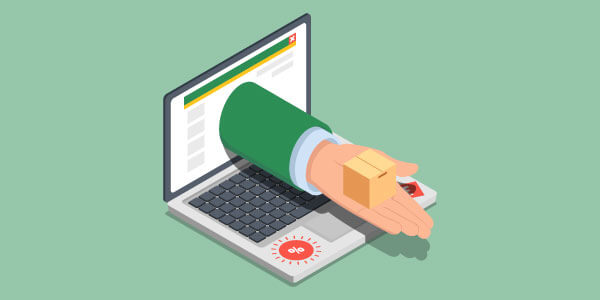Online selling isn’t that different a world from offline selling. Sure selling online comes with the potential of wider reach and selling around the clock but some things remain the same. Online selling places a further burden on sellers that regular offline sales do not. These burdens are reflected in the online selling mistakes we will talk about today. For each mistake, there is a hypothetical example and a solution to it for academic purposes.
Not displaying information
One of the biggest advantages of selling online is the sheer amount of information that can be communicated about a product and the relatively low cost of communicating this information. The online buyer is the same person as the offline buyer with the added knowledge of how much information they can be provided about a product. So if you are selling online and not providing full information about a product, at least all the information that matters to customers you are really underutilising the medium and customers will notice this. If you’re trying to buy a computer you understand that they are extremely complicated products with widely varying specifications from processor, memory, storage, connectivity and other functions. It only makes sense to provide all relevant data about your products to customers. I have on occasion switched to another vendor because of one vendor’s lack of information.
Not making it easy
There is something I call the rule of “er”, not sure what it’s called in the real world. It states that for online selling to make sense to your clients it must come with something that has an “er” on the end of it. Qualities such as being better, faster, cheaper and easier are the best examples of this. If your online selling process is in its entirety more complex than an offline sale you may find your business becomes an information portal and nothing more. You must look at your process and find your “er” word. In this case, specifically, the idea is to make the process easy for the customer and if possible easier than other offline options. The first part is essential, the second is an added advantage.
Not considering the customer journey
Carrying the thinking from the previous point you need to consider the customer journey in using your online process. It’s not enough to say that they click, pay and receive. We live in a country where the banks, payment platforms, logistics providers or the power utility could become huge problems at the drop of a dime. It is important to have test runs of the buying process for customers to collect real experiences. A problem with mobile money is not your fault as an operator but customers see the whole system as one thing. At best they will abandon your online platform and choose to buy offline. At worst the customer will abandon you as a supplier altogether. If you understand the customer journey you have a better chance of dealing with such experiences in a way customers will appreciate.
Working in an offline methodology
I’m sure I have mentioned this a few times before but as long as I continue to see it I feel there is still a need to speak about it. As mentioned earlier the whole reason for turning to online selling is to take advantage of what the online world can do for us. So an online selling process, that uses an offline selling methodology is grossly missing the whole point. Online processes allow for the automation of certain processes and the transfer of details. Now if I have to visit your online store and gather a bunch of product codes or names and then have to tell you the product codes or names I might be better off just walking into the store, picking everything up and handing it to you.
Not thinking about EVERYTHING
This point may seem a little unfair to online retailers but I assure you it is plucked straight out of reality. You are not responsible for the internet speeds your customers experience for example but you can bet your bottom dollar the customer’s frustration will be visited upon you. Customers will sooner look for a retailer that has a website that performs better on their poor internet connection than look for another internet provider. The same goes for logistics, payments, packaging and anything else you want to add to the list. Whether you are providing these things by yourself or using 3rd parties to fulfil them it really is something you need to think about. This is an extension of considering the customer journey. Customers will simply combine all the elements involved and associate them with your online store.
These are not the only online selling mistakes. They are probably not the worst that exists. However, these mistakes are prevalent in online selling and need to be done away with.








